Diwali is a big deal for several people in India. I never considered myself to be very religious, but spending my first Diwali (in a long, long time) away from home made me realise just how important it was to celebrate the festival with my family.
For those of you who aren’t familiar with this Hindu festival, Diwali is the festival of lights, and mythologically, it signifies the homecoming of a victor after good has won over evil. It’s a time of love and bonding, not only with your loved ones but with your community as a whole. I have memories of celebrating by bursting firecrackers with my friends as a child, and even the neighbours we never saw would come out to share a sparkler or two. Everyone’s in a good mood, dressed in their vibrant, festive best, sweets are distributed all around until you don’t remember which box of sweets is whose, and everyone’s houses are covered in strings of lights and lined with rows of diyas (little lamps made of clay with a cotton wick to light).
As I grew up, the excitement of the crackers faded, and while the festival wasn’t marked with its usual hustle-bustle, it was still a time to bond with my family over a special meal, or to help my mother roll out the wicks for the diyas. We would still dress up, if only to take a hundred photographs that my parents would then sift through to send to the extended family groups with the usual “blessings from our family to yours” message. In short, it was still a time filled with love and togetherness.
I joined Uppsala University this autumn, and faced my first Diwali away from home on Monday, the 24th of October. In the week leading up to Diwali, my Instagram feed was a myriad of people I knew having several rounds of Diwali parties, and I could feel the homesickness creeping up my throat. Without realizing it, Diwali had made its importance known, and I missed the little things I’d do if I was at home with my parents and my younger sister. I hadn’t made any particular plans for Diwali myself, even though I did have a group of Indian friends.
Eventually, the 24th of October rolled along and I found myself sitting dejectedly with a reading for my next class. My phone buzzed with pictures from my family dressed in their glowing traditional attire, and it suddenly struck me that sitting dejectedly wasn’t all I had to do. There might be several thousand kilometres between me and my family, but hopping on a video call with them would take a couple seconds at best. Two rings later, I could hear the distant sound of crackers being burnt at my apartment complex back at home, and my phone was crowded with the smiling faces of my parents.
The call didn’t last long, but it was more than enough to lift my spirits and remind me to keep the spirit of the festival alive by myself. Diwali is also a festival that calls for an intense cleaning/repairing session of your entire house, and so, as mundane as it might sound, I pulled out a round of sewing and repaired a tear I made in my clothes while getting a pantleg caught on a random nail on my bike (Uppsala things, I guess)! I folded my fresh laundry, and decided to make myself a special meal, preferably something that I had never tried making before, and it wasn’t hard to find a recipe like that since I have cooked approximately three times before coming to Sweden, and I am very basic with all my meals.
I settled on a tofu salad (very non-Indian, I am aware), and while I was cooking, I bumped into my Indian friends, who also had nothing on their plate apart from studying or working. Fortunately, we collectively decided to put everything aside for a while and spend time with each other. Sitting at the kitchen table, we shared stories of what we used to do for Diwali growing up, and it was so interesting to see how different everyone’s celebrations looked back at home.
I have this distinct memory of zooming out and looking at that moment – the three of us, laughing and talking over a shared meal in a typical common Flogsta kitchen – and feeling like that was Diwali celebration enough. To sit and spend time with people you enjoy spending time with, to share, to spread good feeling, to remember what is good and what to be grateful for, and to try and create more of those things. I mean, isn’t that what all these festivals are for anyway?
I ended up with a very strange but very memorable Diwali, and it was one that I felt genuine joy and warmth in, despite the absence of the fire-lit diyas.
I think what I’m trying to say is that, things can look so different when you’re in a different country, enveloped in a foreign culture that takes you so far from your own. But that doesn’t mean you can’t celebrate in your own little way; in a way that makes you feel the core happiness that is seated at the centre of the time you spent with your loved ones. Celebrations don’t have to look like they did back at home, they need to feel like home.
Category: Okategoriserade (Page 7 of 21)
Fossils are actually a little bit responsible for how I ended up studying Energy Transition at Campus Gotland. I was still in highschool, sitting in one of my environmental science classes, sleep deprived as ever – being an International Baccalaureate student – when my teacher posed the question to our class as to whether we know where some of Sweden’s most incredible fossils can be found. Sitting there, I wanted to make an effort to actively contribute to the discussion, and my memories drifted to a time when I was much younger, on a field
trip, deep in nature, squatting as I searched for fossils… on Gotland!
My answer was, of course, correct. Across this island in the Baltic Sea, rocks that indicate global extinctions and other prehistoric events are just abundant. Remembering my short class trip to Gotland as a mere 12-year old inspired me to spend the rest of my lesson looking up university possibilities on the island – of which there was actually just one… I was amazed to realise that not only does Campus Gotland offer some exciting programmes related to the environmental sciences field I was interested in, but the campus is even part of Uppsala
University, Sweden’s first and oldest university. There and then, I knew I wanted to study here.
I’m currently in my third, and last, year of studying Energy Transition – Sustainability and Leadership. I don’t study about fossils much, I almost forgot about my fascination towards them during the period between highschool and the start of my new life on Gotland. They have a way of reappearing in my life though. During an evening walk by the seaside near the university, I glanced down at my feet and happened to notice a stunning little fossil. Besides it lay another. And another. Once I squatted down to take a closer look, I couldn’t unsee the
beautiful fossilised bounty of the seaside.
During my occasional travels around Gotland, a must-have on my agenda is finding rauks – fascinating limestone land formations created by wave erosions during the course of Gotland’s geological history. One of my favourite Gotland facts that I learned during the Visby tours, which Uppsala University offers to new students every year, is that this island’s bedrock is formed of prehistoric, fossilised coral reefs, some of which withstood the course of crashing waves over time and remained standing as isolated land formations. These are the rauks, hard limestone rocks that contain fossilised remaints of the prehistoric reefs Gotland
was formed on.
Campus Gotland is located in an environment where winding down after class in a fossil paradise, and hiking to a rauk field, is all possible. I spent all my life living in capital cities where such was unimaginable, hence sharing my new home with such rich geological pieces of history fascinates me. I feel lucky to have started my university studies in a place that’s this peaceful, stunning, and so close to unique natural formations.
Many ask where I’m heading next, in June when my studies at Campus Gotland come to an end. In 20 years, I simply hope to imagine myself being knee-deep in fossils, with the same sparkle in my eyes as the one I’ve got that first evening during my seaside walk. I return to that spot often during my time in Visby, sometimes for a mere casual walk, other times with gloves in my pocket ready to keep my hands warm in case I pause to browse through the coast’s fossils.
If you would like to experience the serene calmness of walking through a rauk field, you’re welcomed to visit some of my favourite ones around Gotland:
- Lergrav: The first ever rauk field I’ve been to. Lergravsporten, a majestic rauk arch you can walk through, catches the rays of sunset if you visit the area in the evening.
- Holmhällar: This is where I stayed during my field trip when I was 12, but the place doesn’t only feel special to me. The area is abundant in fossils and a variety of captivating rauk formations.
- Snäckschimpansen: The closest rauk to Visby, found in Snäck. It’s exciting that I can walk here any time without having to plan a trip around it. I hear this rauk is a much newer formation than the ones you usually find around the island.
- Gamla hamn: The “postcard rauk”. This is the one you will find on most photographs of Gotland. It’s all the way on Fårö, so it’s a full day trip away. I thought it was a lot taller in real life!
- Digerhuvud: Also on Fårö, it’s Sweden’s largest rauk field. I spent a sunset here, and it was unlike anything I’ve experienced in terms of nature’s magic. The endless stretch of rauks along the coast were captivating.
- Lickershamn: This is just a half-hour ride from Visby. I was here on a rainy, misty day, and got to spend some truly peaceful moments around the rauks in this area.
Thank you for reading my little blog entry about how it’s party thanks to my fascination towards fossils that I discovered Campus Gotland. If I inspired you to go fossil-hunting or visit a rauk field, remember to brush up your knowledge prior to your trip about where it’s allowed to climb rauks or take fossils home with you, and don’t forget to leave nature the same way you found it.
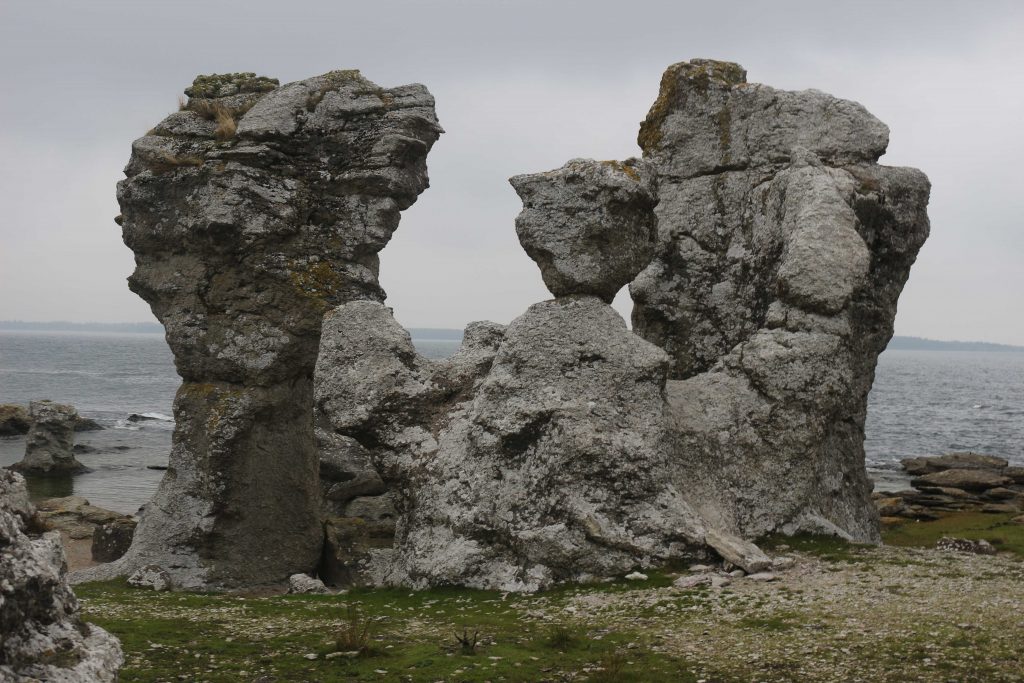
I’m leaving you with a peculiar fact that always makes me smile a little: on Fårö, you’re not allowed to stack stones to make rock towers – moving stones away from their place is not permitted in efforts to conserve the natural landscape and the habitats of animals that dwell amongst the rocks.
Traveling in Uppsala is very easy! There are many busses that go every 10 minutes during the day or every 30 minutes at night. To use the bus, you can download the UL app and this app is so easy to use to know when and where to grab a bus to go anywhere in and around Uppsala. You can also use the app to buy bus and train tickets, but you can also buy a bus ticket on the bus, to avoid using the app but that can be more expensive. The only downside to getting a bus is that it costs money to travel each time and sadly there is no student price, but when it’s cold, raining, or windy, or your bicycle is broken, grabbing the bus is a great option!
Instead of a bus, lots of people in Uppsala also use a bicycle. Bicycling is very easy in Uppsala and many students and people in general travel by bike in the city. There are many bike roads separate from the car roads which makes these bike paths very safe and easy to use. It is also very easy to navigate through the city and it’s also a great way to keep moving and enjoy the city from a different perspective. You can also cycle into many forests and discover Uppsala in a totally different way. Bicycling can also be faster than a bus, since you can always grab your bike and go somewhere else without having to depend on a bus schedule, and using a bicycle brings you closer to the destination you need. Just make sure to buy a good lock for your bicycle, since they can get stolen in the city.
Bicycles can easily be bought at second hand bike stores, or at bicycle sales held every so often at Flogsta and Gottsunda. Second hand bikes work well, so you do not need to buy a new bicycle for an expensive price. And if your bicycle ever needs reparations, second hand shops can also help with that for a decent price. You can also buy second hand bicycles on Facebook marketplace! Second hand bicycles are a great way to save money and recycle used bicycles.
Can’t get a bicycle and don’t want to use the bus? There are many electric scooters you can rent in the city. Apps such as Voi and Tier show you where the nearest electric scooter is, where you can activate it and rent it for as long as you want. They can be rented for a day, for a week or even a month! It’s a fast, easy and fun way to explore the city and also an easy way to include your friends if they visit you and don’t have a bicycle to travel around.
Whether it’s a bus, a bicycle or electric scooter, Uppsala is an easy city to travel around! And if you’re ever feeling active you can also easily walk around the city too. I love my bicycle, what’s your preferred method of transportation?
When you arrive in a new country you really want to make your flat or your dorm, the most unique and comfortable place! But as a student, spending all your riches on it is not the sole purpose of your coming to Sweden. So….. Why don’t you try to do that by going to second-hand shops? You could find a lot of things at an amazing price while preserving the planet from overconsumption (probably the sustainability girl in me who talks now XD ) In this blog, I will try to guide you through different second-hand shops around Visby and maybe you will find super cool stuff that no one else has 😉
Let’s start with PMU Second Hand:
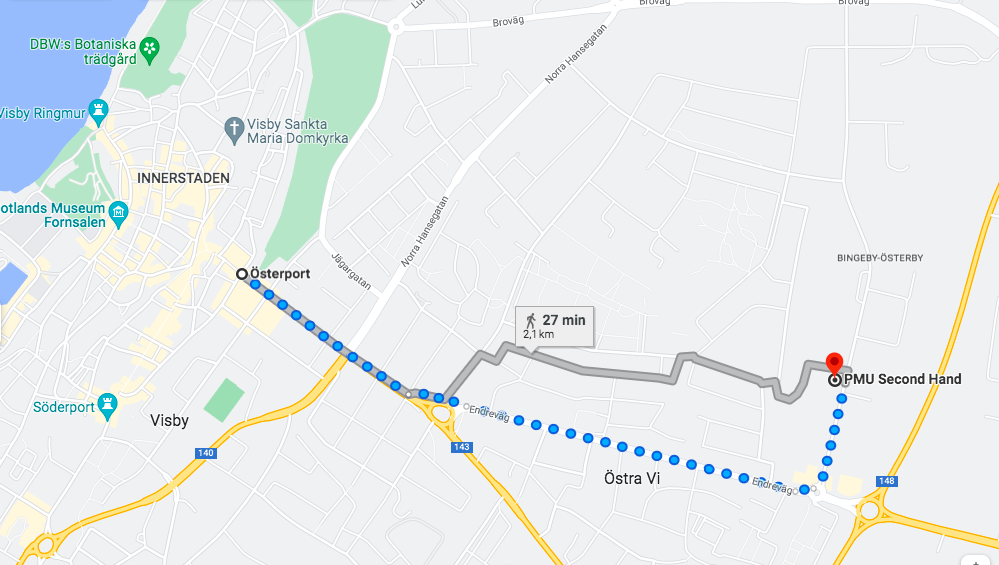
It is located around 30 min away from Visby (Osterport) but it is worth the visit!
This second-hand shop is the PARADISE! Really it has everything that you need: glass, plates, books, cool vintage Visby postcards, clothes, and even pieces of furniture. The thing that I like the most about this shop is that the items change depending on the current season. For example, the first time that I went there was during Christmas and I found so many cute Swedish Christmas decorations! I was so happy. It was amazing to bring so many unique items to France and put it on my Christmas tree and decorate my flat with them 🙂 Also, you can find some Gotland tourist items which are one of my favourite things to thrift: So if you want to have some souvenirs really go there! It will be less expensive and you will be super happy to have found it. Also the staff there is super nice 🙂
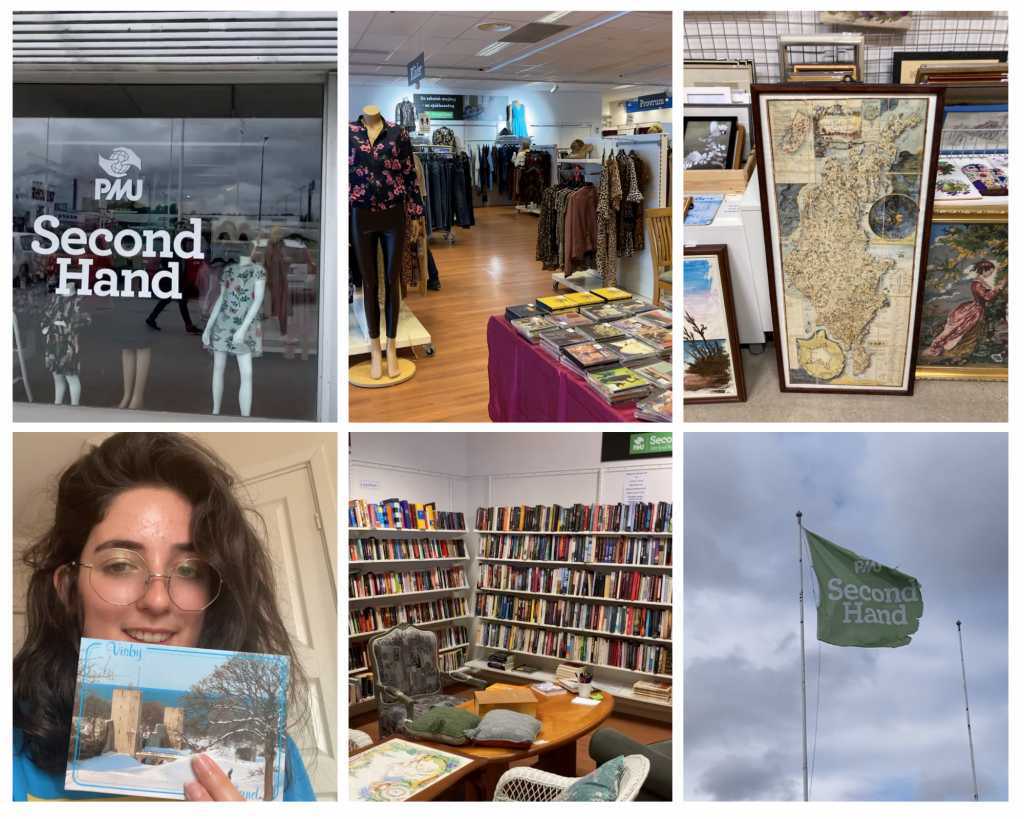
My second favourite thrift store in Visby is the Red Cross:
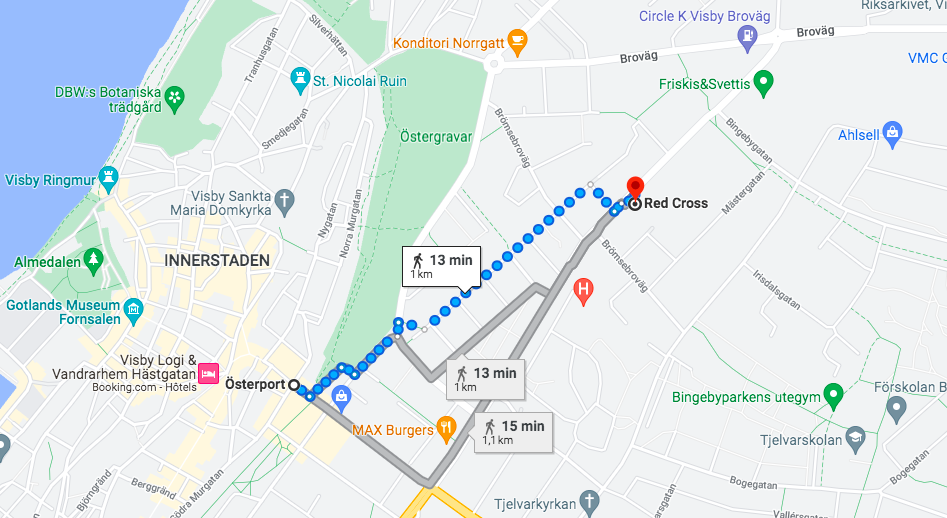
It is a charity shop so you can find these types of shops all over Gotland but the closer one is 15 min away from Visby (Osterport).
It is a very nice shop with a large selection of clothes! You can find what you like inside. It is smaller than PMU but still with a lot of stuff, you can find: plates, glass, mugs, clothes, CDs,… But the thing that I like about this place is that people with disabilities have jobs and are reusing old pieces of fabrics to create tote bags, scrunchies, aprons, and a lot of other stuff and sell them in the shop and you can have even more unique pieces while doing a very nice action by supporting their work! I always find really unique pieces there such as the Pippi frame or the Gotland Mug! This place is also a café so if you want to thrift as well as a break from all the shopping and hunting that you have been doing this is the perfect place 🙂
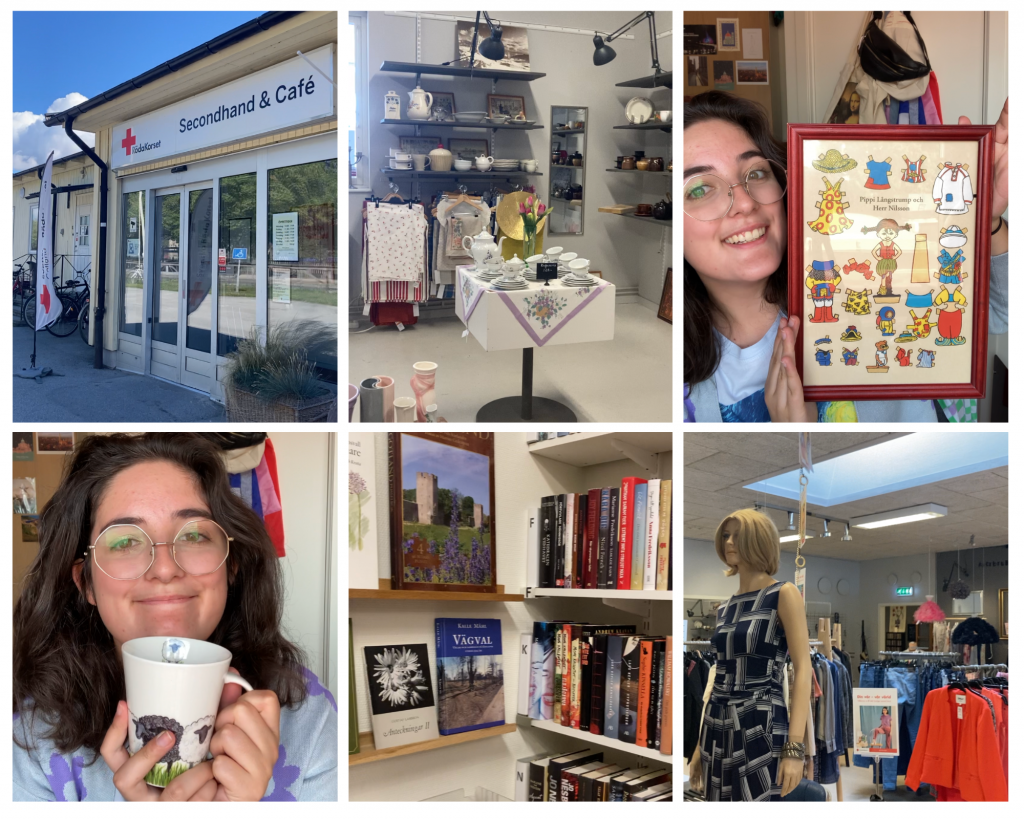
My third place is actually Antikvariat Drotten(Antiquarian Drotten Map)
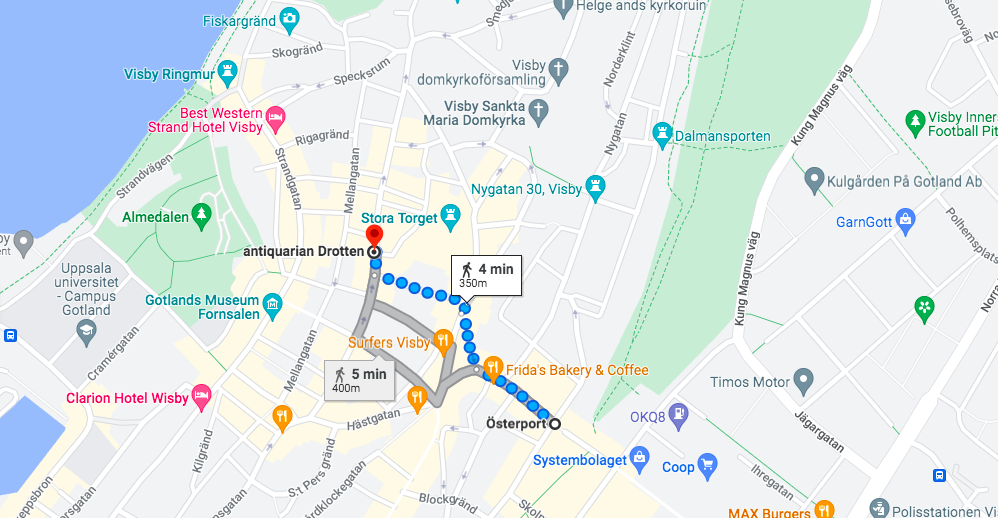
It is located inside the city and is a very unique place!
You can find a bit of everything in Swedish and a bit of English Books. It is not open often so check out the time schedule before trying on going there 😉
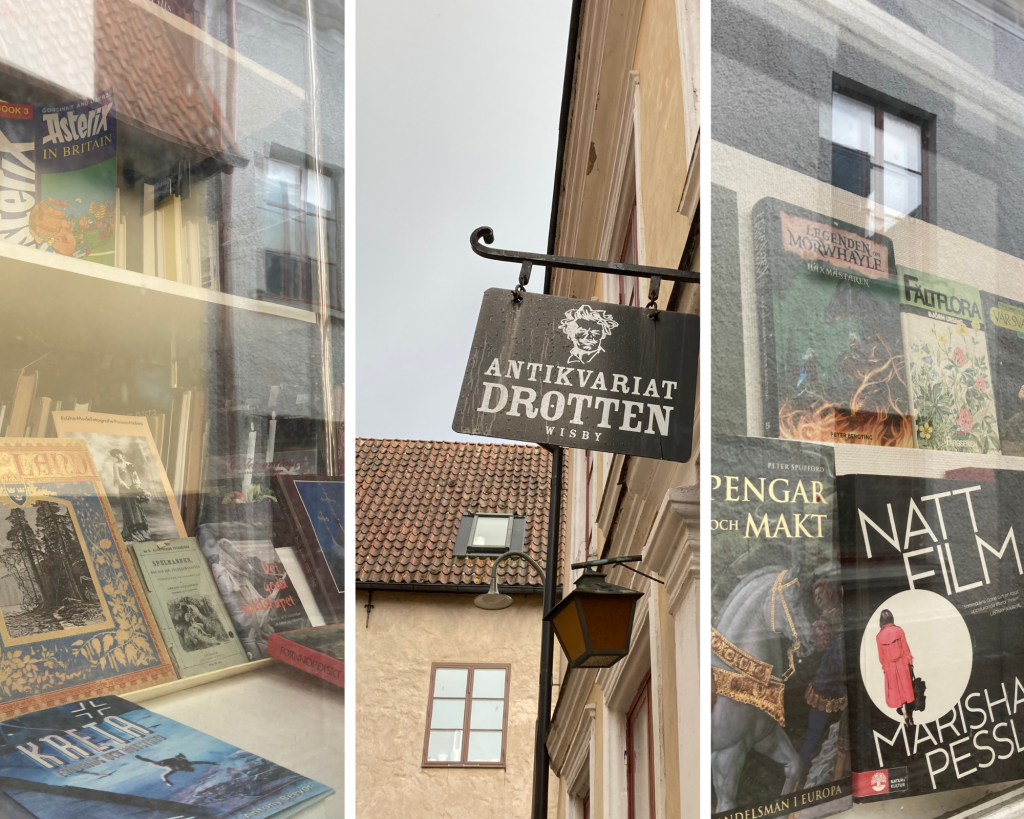
My fourth thrift store is Re: Dress
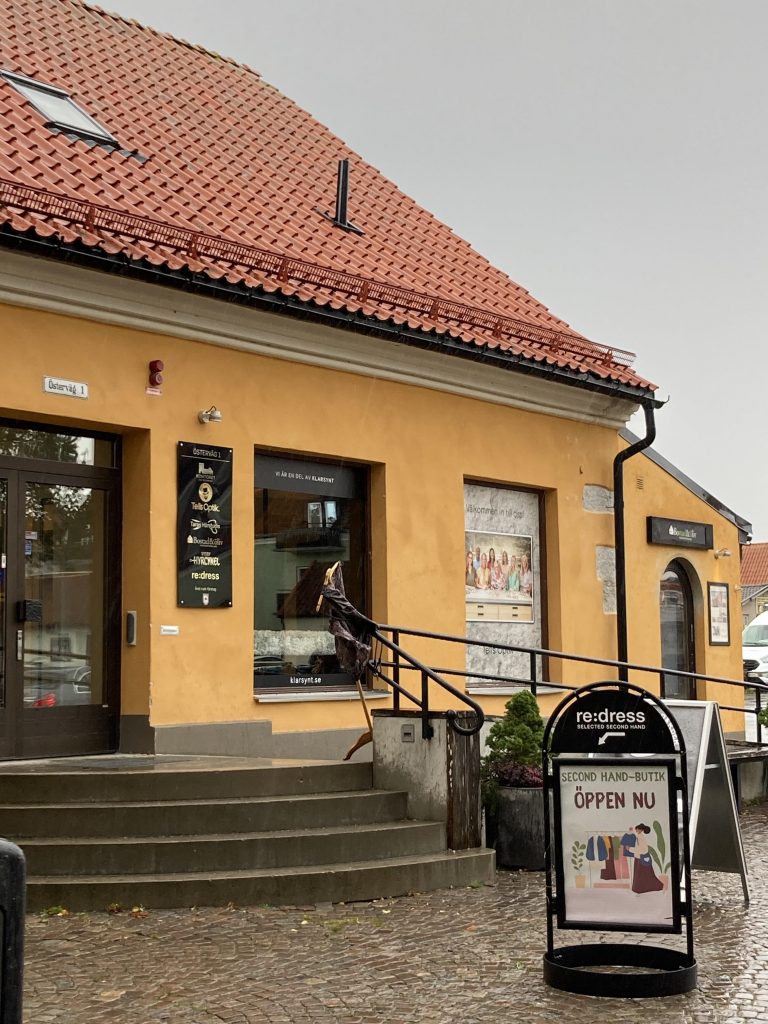
It is actually located next to Osterport.
It is a very small shop that is kind of hidden but very nice to go to. This is more of a luxury/ expensive item shop! So if you want to check it out and you are ready to spend a bit of money for a very unique piece of clothing, go for it 😉
The last two places are further away from Visby and are places that I haven’t been but would love to go and try. Those places are Kattstodet Gotland and Ateranvandarna Gotland !
Well, I hope that I gave you some of my love for thrift shopping and that you will love to find your own very unique pieces from Sweden and on the same occasion win some money and save the planet!
Here is the list of all the thrift shops with their addresses and time schedule so you can be ready to go when it is open! A reel was also shared on our Instagram account study@uu where I go to the first two thrift stores !!
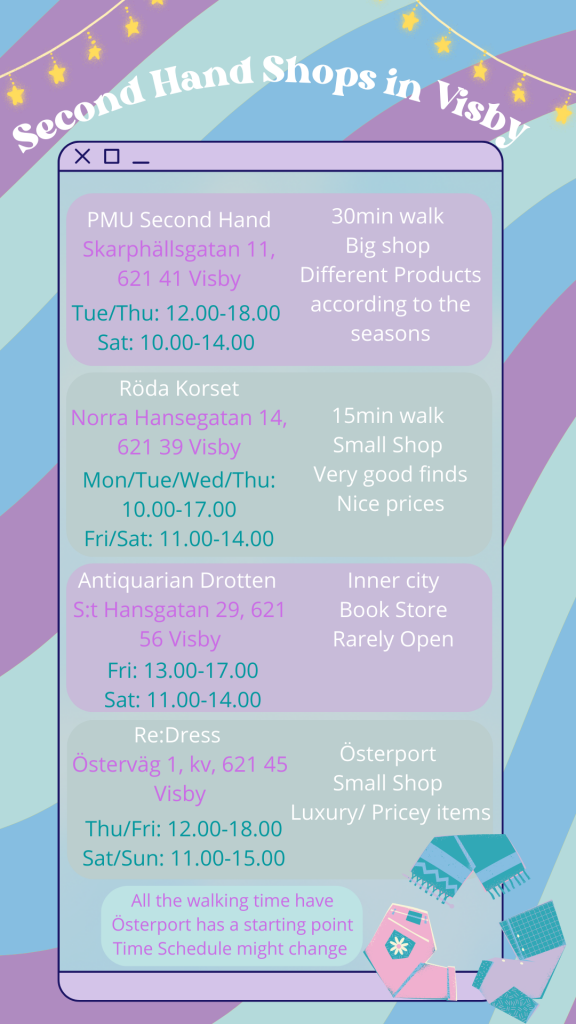
Have a wonderful day! And meet you in the Second-Hand shops 😉
Moving to Uppsala is very exciting and finding things to do can be scary but also so much fun. Having lived in this gorgeous city for a year, I can tell you there are so many things to do in Uppsala and that’s what makes Uppsala University such a great place to study. From studying in libraries in different university faculties to partying at a student nation, there’s something for everyone to do! But to make things easier for you, I will roughly split the things to do in Uppsala into three groups:
1. Studying
While being a student in Uppsala can be filled with fun and exciting activities, sometimes we must study and keep up with our readings, deadlines, and exams. Studying can often be boring, but Uppsala University offers different faculties with different libraries, but also great unique study areas to make studying more enjoyable. I especially enjoy studying at my faculty because we have a unique study dome where students can study in while enjoying the view to the botanical gardens right next to Blåsenhus. It’s awesome!
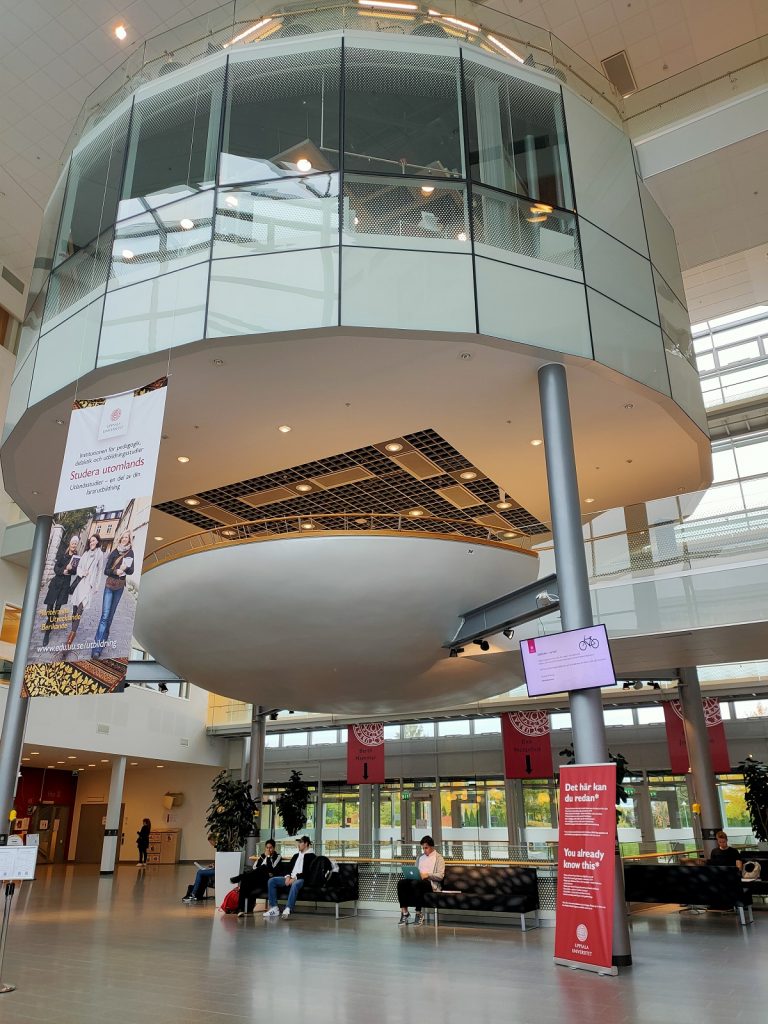
If the dome is ever full, Blåsenhus also has such a nice library to study in with many sockets throughout, so my laptop never runs low on battery. The library also has such comfortable chairs; I can study in complete comfort. I do have to watch out because sometimes I can get too comfortable and zzz? And this is just my campus! Other campuses also have awesome libraries and student areas. One of the most popular study rooms is the awesome study
room in Ekonomikum. Being in that room is like being in a relaxing starry galaxy. Look at the picture! What else would you want?
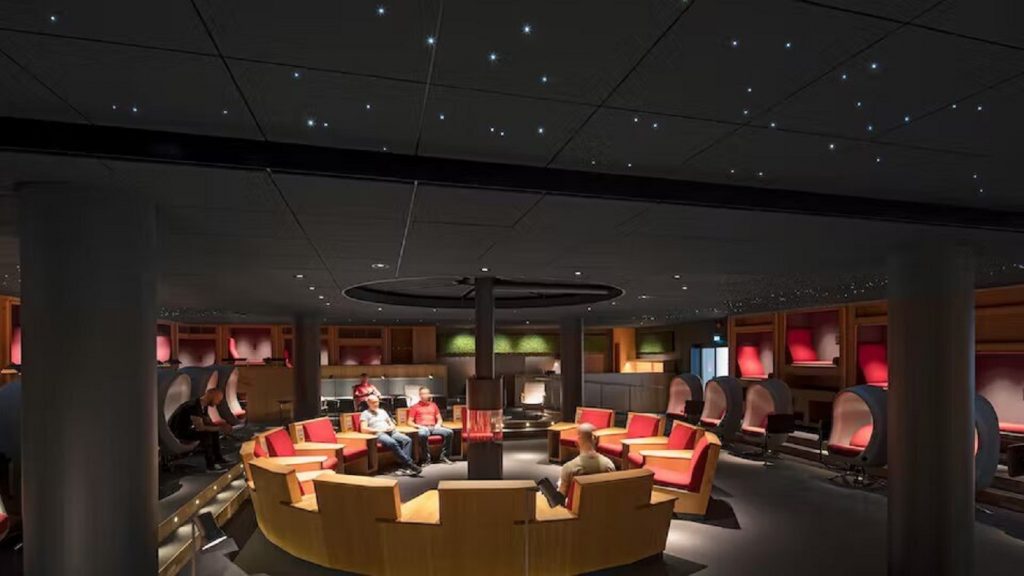
Aside from the libraries at the University you can also study at nations. Lots of student nations have their own library or study area where students can study in a more casual setting. It’s a great place to study right before going to the pub or any nation activity. If you enjoy fresh coffee and getting some fika while studying, you can also study at a café! I enjoy getting a nice cup of coffee and a piece of cake while studying. But don’t forget your headphones otherwise the people in the café can be kind of distracting and all you’ll be doing is drinking coffee and eating cake? Going to a café is also lots of fun to meet friends for fika in between studying. Fika really is an amazing Swedish tradition, please take advantage of it and try out all the Swedish desserts!
2. Student Nations and Student Unions
Student Nations have nice libraries and study areas, but they also host so many events for students in Uppsala. If you don’t know what to do during the week, you can always check out the nations’ website: nationsguiden.se Here you can get all the information you need about what nations are up to from breakfast until party time ? Many nations also have their own restaurants and cafés, so you can easily find somewhere to eat from breakfast, lunch, and dinner! The food differs per nation, but the food is good, and the best part is that it comes at a student price, so eating at a nation is cheaper than eating somewhere else. Nations also offer different groups with different activities. I was a part of the theatre group at Kalmar nation, and it was so much fun.
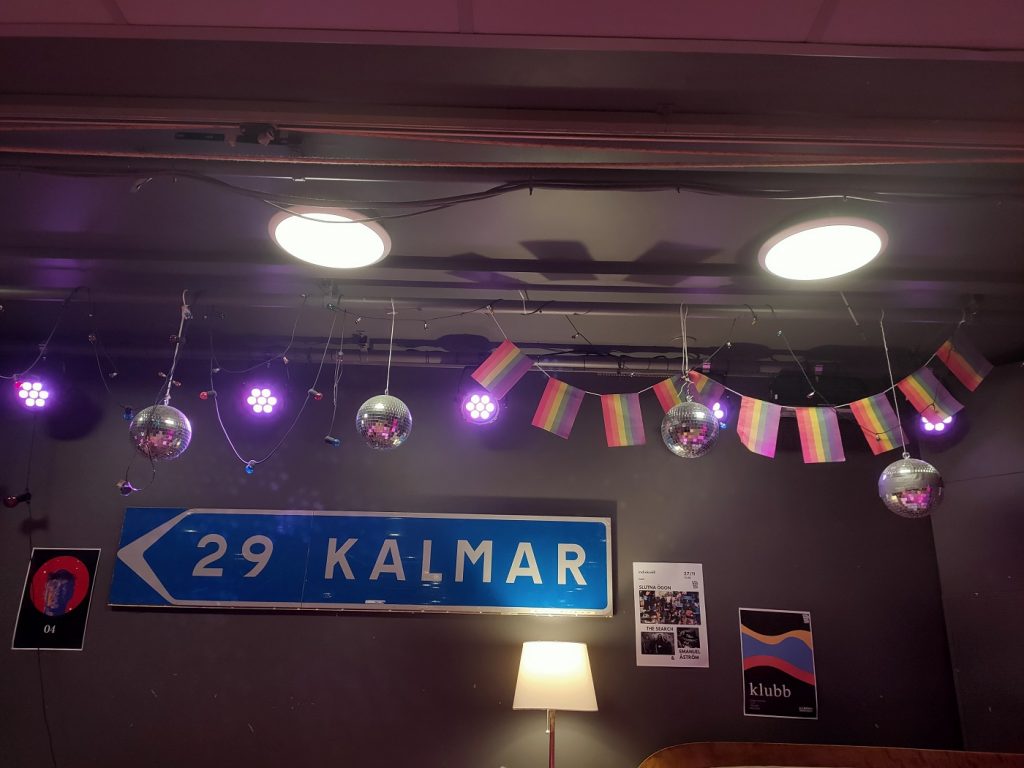
Nations offer groups like choirs, art club, dance clubs and much much more! This year I did theatre club, but who knows what I will do next, maybe I will join another club or start my own. All of this is possible at student nations, woohoo! Nations also host game nights, pub quizzes, karaoke, parties and lots of other fun activities. It’s truly a great place to meet new people or go out with friends. While partying and activities are great, you can also make some money by working at nations. Working at a nation can be very fun and easy way to make some extra money. You can work with friends or make new friends while working at nations, but sometimes you can also get some free food or access to cool nation events!
The Uppsala Student unions are also a great way to make friends, but also make a difference for the education provided to students at Uppsala university. The student unions seek to help better programmes at Uppsala University through the help of students. So, if you ever have any issues with your programme the student unions can help! Uppsala University has six student unions, five in Uppsala and one in Gotland. There are also various committees and clubs you can join through the student union, such as the debate club or student committees for different programmes. I happen to be a member of the student committee for my programme, Habitus, and we seek to provide a bridge between our department and the students. We gather feedback with and for the department, but also host events for students in order to form a community within my programme. So, student unions and committees deal with more serious matters within the university, but they also host various events. It’s a great way to keep up with university matters while also making friends and having fun.
3. General activities – Museums & Gardens
Aside from studying and attending events at student nations, Uppsala has a gorgeous cathedral you can visit. The cathedral is big and can be spotted from miles away! The cathedral is beautiful inside and out and is definitely worth a visit once you are here.
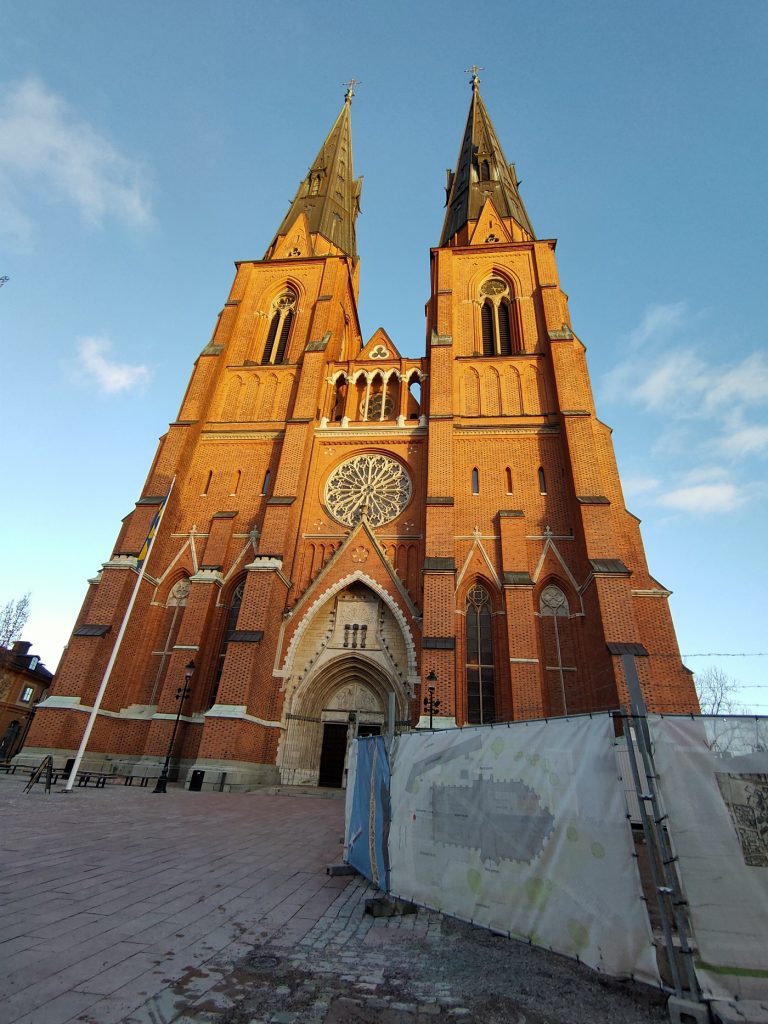
Uppsala also has various museums you can visit. Many museums are free for students or have a discount for students. One free museum is the Evolutions Museum that consists of three museums which show different aspects of evolution, namely the evolution of zoology, the evolution of palaeontology and mineralogy (aka, fossils and dinosaurs) and the evolution of botany. So, there is enough to see by simply visiting one museum already. You can’t imagine how much more you can explore!
The city also has a beautiful castle you can visit, where you can also have a tour of their dungeons and take a look into what the castle possibly looked like in the past. The castle also has an art museum you can visit. And from the castle you can also catch a gorgeous view of the royal gardens where the Linneanum orangery is located, which holds the botanical garden’s tropical plants and cacti. And if you’re interested in seeing more gorgeous gardens you can visit the botanical gardens! They have flowers, herbs, fruits and vegetables and many more plants to admire. They also have a tropical greenhouse that has many cute frogs roaming around ?The best part? It’s free for Uppsala students! So, what are you waiting for? Go see those cute frogs!
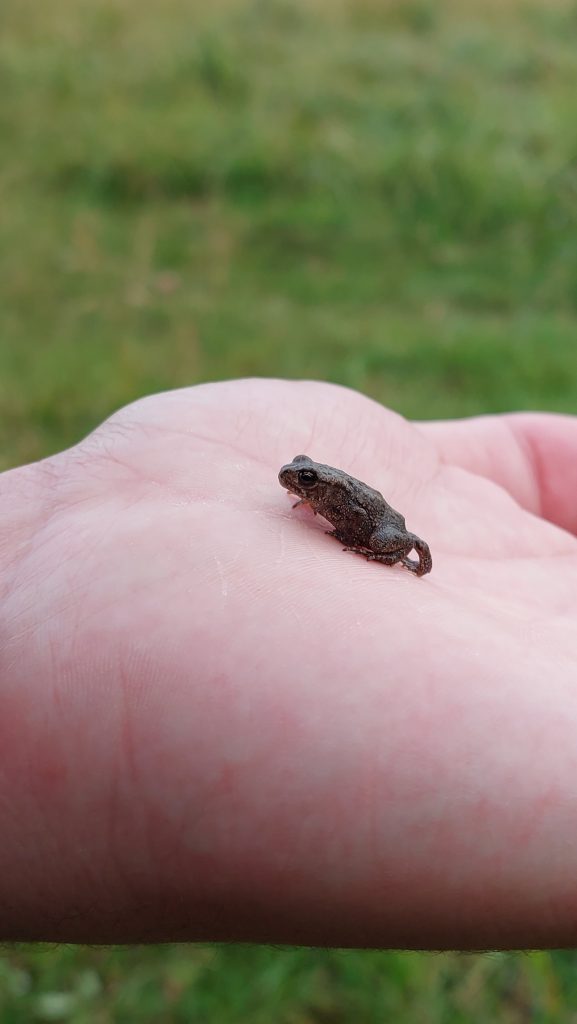
3. General activities – Forests and Hiking trails
Grab your hiking shoes and explore Uppsala in a whole different way! Uppsala is filled with rich nature and gorgeous forests. What better way is there to explore Uppsala’s nature than hiking through the forests? At every start of a trail you can find maps of different hiking trails nearby, but you can also find various maps with hiking trails all over Uppsala at Biotopia. This is a museum in Uppsala which shows the different animals that can be found in Uppsala. There are different hiking trails, from easy and short ones for beginners, to more difficult and longer ones for more experienced hikers. During your hikes you can expect gorgeous views of not only trees and plants, but also different animals like deer, squirrels, hares and maybe even a fox! During your hike you can also pick berries, mushrooms, and fresh herbs to eat! Some hiking trails even take you on a journey to old Viking graves where a Viking Museum is also located nearby, namely Kung Björns Hög!
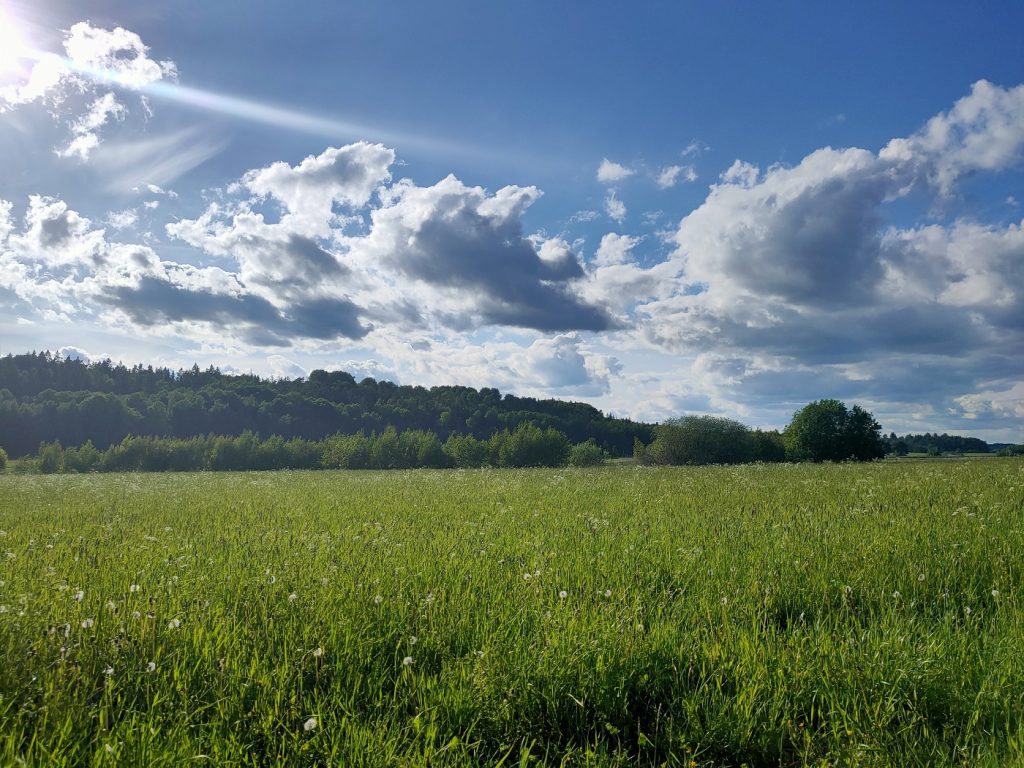
3. General activities – City Center Activities
When you’re not studying, hanging out at a nation, or discovering Uppsala’s forests, the city center also offers different activities. You can enjoy a cup of coffee and delicious cake at different cafés, loan a book at the city library or just enjoy the many events they offer at the Uppsala square, Forumtorget. At this square they sometimes have Salsa lessons, zumba, board games, music or even a carnival! During Christmas time they also have a Christmas market with lots of other fun activities to take part in whenever you’re in the city! Do you want to visit the city center and want to know what’s going on at Forumtorget? Check out forumtorget.se
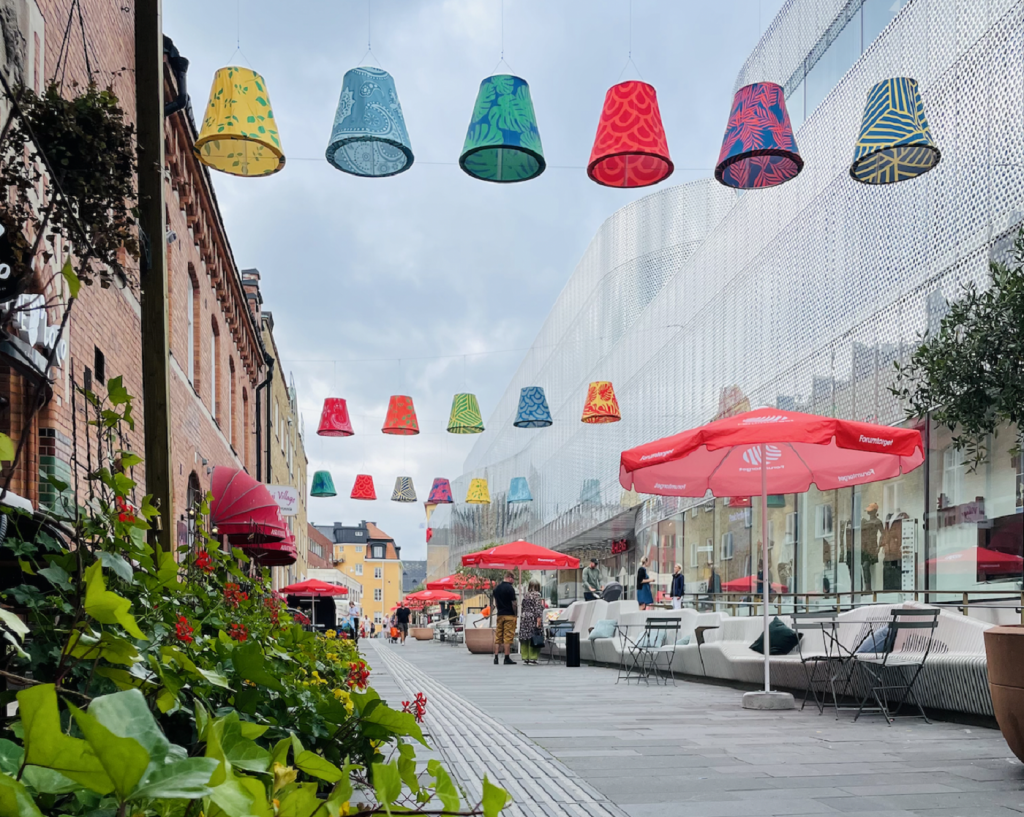
All in all, Uppsala has so much to offer for everyone! From studying, partying or even hiking through the forest, the city is always busy and ready to offer the next thing to do. It’s a city where you can never get bored Uppsala is great and never get bored. Many things to do and never get bored.
Hej hej, it’s me again! Since my first blog entry was about my trip to Norway during my Erasmus exchange studies, you could guess which topic I’m going to talk about today…
Traveling!
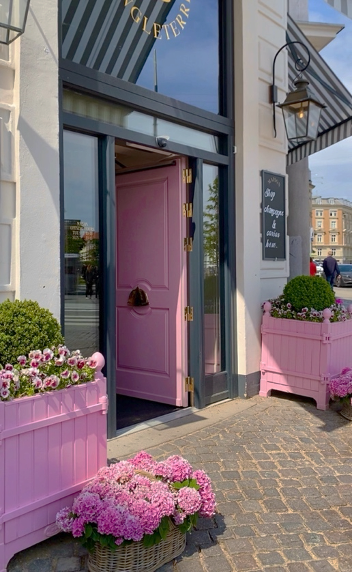
This time it’s not too far away and partially in Sweden. For those of you who are here for a limited time only and want to see and experience as much as they can, this mini guide will hopefully be a nice contribution to your bucket list. We all know that studying abroad can be expensive and yet most of us want to have the full study abroad experience, so it is wise to set aside a little bit of money in order to get on the road aaaand travel!
Have you ever been to Malmö? It’s a popular destination so I wanted to see it first-hand. So, I went on the Internet and did my research on how to get there and, most importantly, the expenses linked to my trip.
If you are staying in Uppsala, you have two options: you either go by plane or you take the train or bus to Malmö.

There are some cheap flight tickets by RyanAir from Arlanda to Malmö airport for roughly 40 € for a roundtrip; however, do keep in mind that you need to get to Arlanda and back and from Malmö airport to Malmö city and back. RyanAir mostly departs to Malmö in the early morning hours, so busses like those from FlixBus or FlixTrain are most likely not your option, as the cheap ones depart from 11 am onwards. So, if you decide on going by plane, you will most likely need to go there by UL/SJ train or UL bus (keep in mind that you need to pay an extra fee to enter Arlanda Airport).

Your second option includes a train ride or bus ride from Uppsala to Malmö. Both will stop in Stockholm, so maybe you can have a small breakfast (depending on the time of the day of course). I decided on FlixBus as it was the cheapest and most comfortable way.
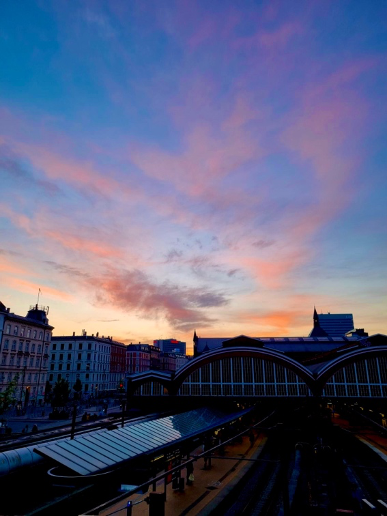
I only had to go to Uppsala Central and then had a 1,5-hour layover in Stockholm, during which I treated myself to a nice brunch. After that, I hopped on the bus again and arrived in Malmö central station. The downside of taking the bus is the long hours. It took me roughly 12 hours, including the layover in Stockholm, to get from one central station to another. However, if you like to get mesmerized by the beautiful sceneries of Sweden, this shouldn’t be
too much of a problem for you. The round trip cost me 69€.

However, the issue is not the transportation, it is the accommodation. Hotels can be very expensive in Malmö, and I wanted to have a decent place to stay. It was important for me to have a separate bathroom and a room to myself. If there was breakfast included, that would be a bonus, but not a must. So, after a long search on different websites, I decided on First Hotel Jörgen Kock. It was near the central station and cost 140 € for three nights.
Having the opportunity to see Copenhagen, I added a day trip, which cost me around 16 € to Copenhagen central station and back to Malmö central station (I used FlixBus again).
I have never talked about this during my takeovers, but me and my partner do collaborations with photographers. We did some collaborations with Swedish photographers already, and we wanted to expand our portfolio a bit, so we did a collaboration with a photographer in Copenhagen. It was so much fun and super nice to get insights from a local!

Now to the fun part! What can one expect of Malmö and Copenhagen?
A lot of seagulls, delicious pastries, and the big city experience!
If you plan to go to Copenhagen, I totally recommend going to Strøget, which is the main shopping street and has a lot of attractions. Watch out for seagulls when you’re eating, as they will try to steal your food! And of course, Nyhavn, which is the most touristy thing one can think of, but it’s so colorful and lively to be there and to take in all those impressions.
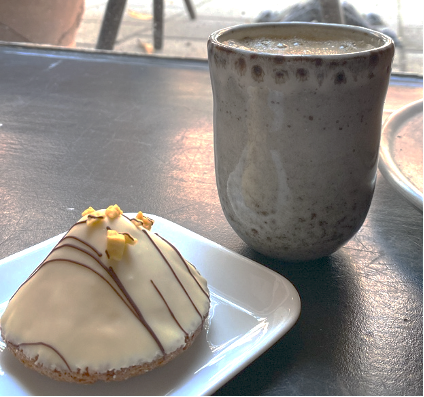
Malmö is Sweden’s third-biggest city, so it’s different from Uppsala. You must visit Ribersborgs Kallbadhus, which has a beautiful café and an amazing view! You can also go swimming there or treat yourself to a massage – just check out their homepage. Öppen Famn is a big and cheap second-hand shop that you must see if you’re into second-hand shopping. If you’re looking for a good vegan and gluten-free fika, you must go to Bageri Leve! I mean, just look at this tasty passionfruit white chocolate cake…
If you’ve read this far, you’re more than welcome to watch the Reel I made during my stay, so you can see more of my trip. Do you feel inspired to go to Malmö or Copenhagen?
/Aslı
Hej Hej! I’m Sam and I am an Uppsala student who got the awesome chance to travel to Visby in Gotland. Gotland is a beautiful island on the south of Sweden. The island has a city named Visby and that’s where Uppsala University has a campus! For my programme, they sent students of my programme to Gotland to follow lectures and seminars, but also to explore the city. It was an amazing experience and very different to Uppsala. From the gorgeous shores to the saffron flavoured desserts, let’s talk about Gotland.
So, to get to Visby it took us around six hours. I had to take a bus, two trains and the ferry. The ferry was actually very big and even had its own restaurant. The views from the ferry were also stunning, especially when arriving to Gotland!
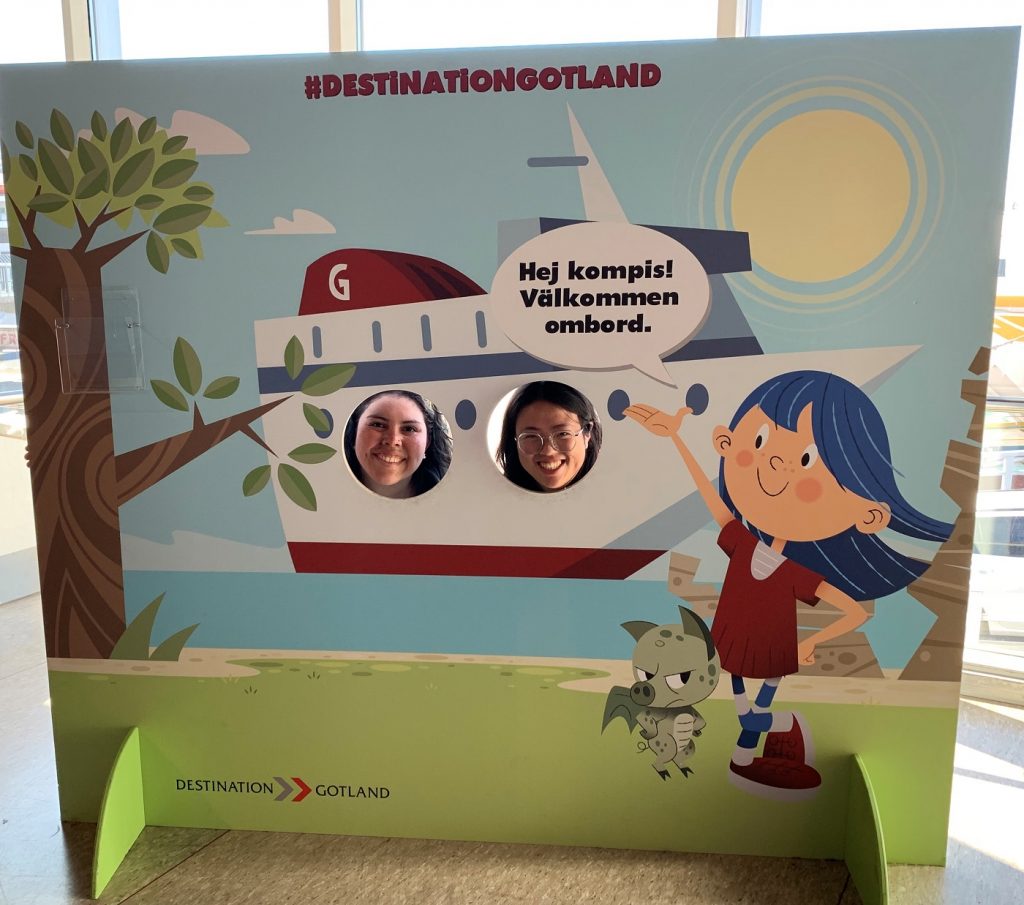
After arriving in Visby, I dropped my stuff off at the hostel and walked a bit around the city. The first thing I noticed was the amount of sheep around the city. It’s so cute and honestly a bit fun to count how many sheep you can find throughout the city, from statues, to souvenirs, they were everywhere.
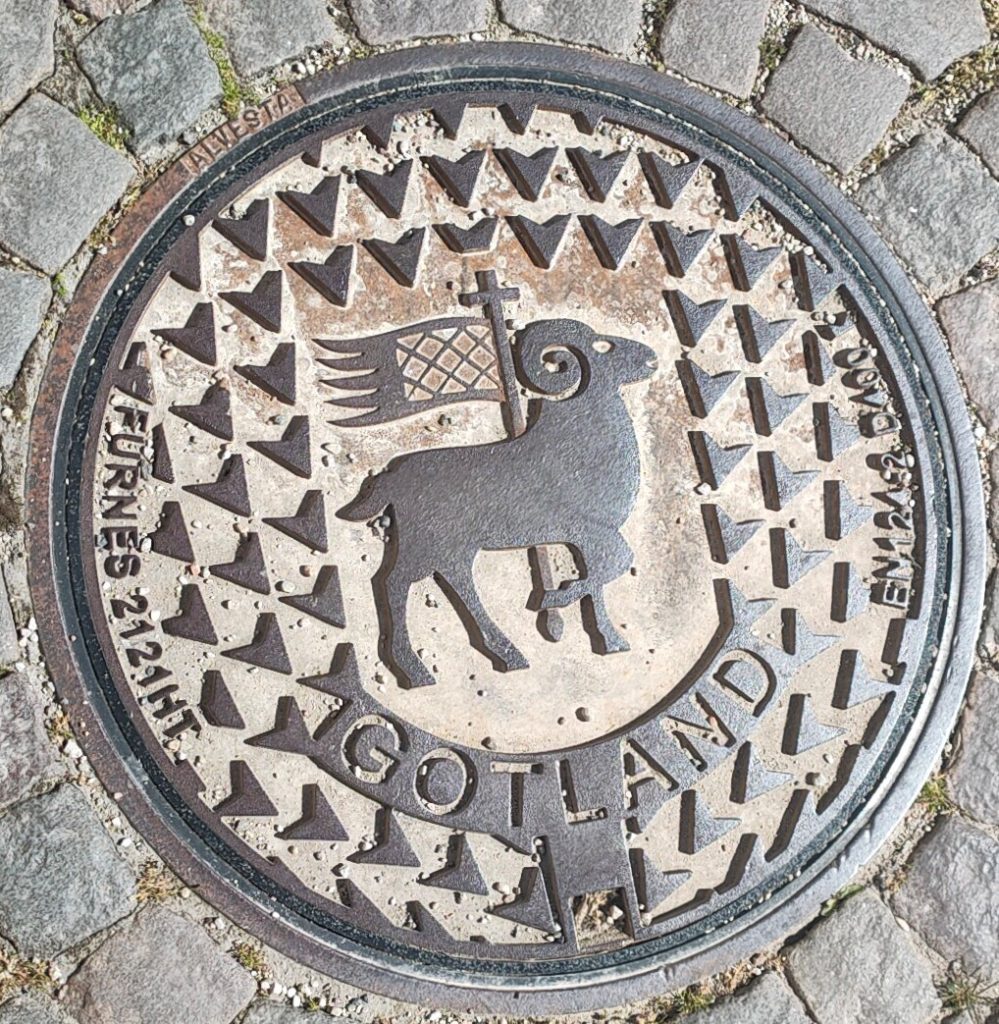
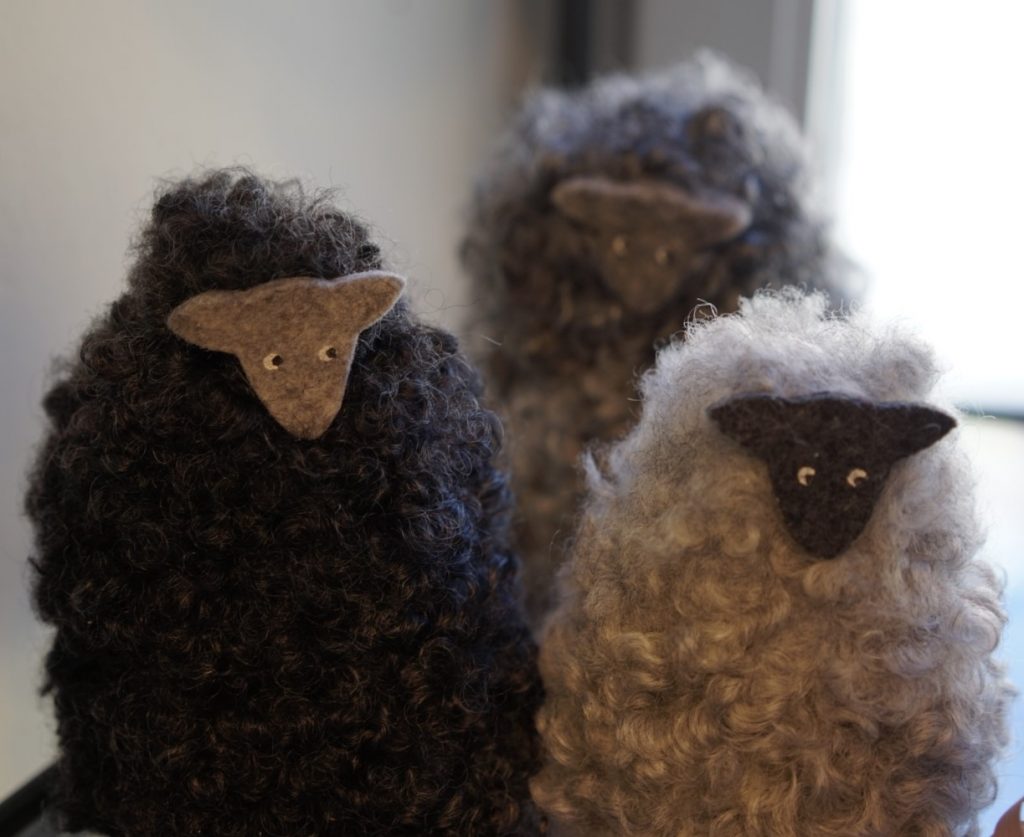
Aside from the cute sheeps another thing I noticed about Visby is that it is very hilly. My hostel was at the bottom of a hill and the city centre was at the top. Sometimes it seemed like I was climbing a mountain to get into the city, nevertheless it was worth it! The city is gorgeous and so historical. There were ruins all over the city and the architecture truly combines modern buildings with historical touches and vice versa. Sometimes it felt like walking through old viking cities. Especially when walking next to the city walls. It transports you to a whole other world back in time!
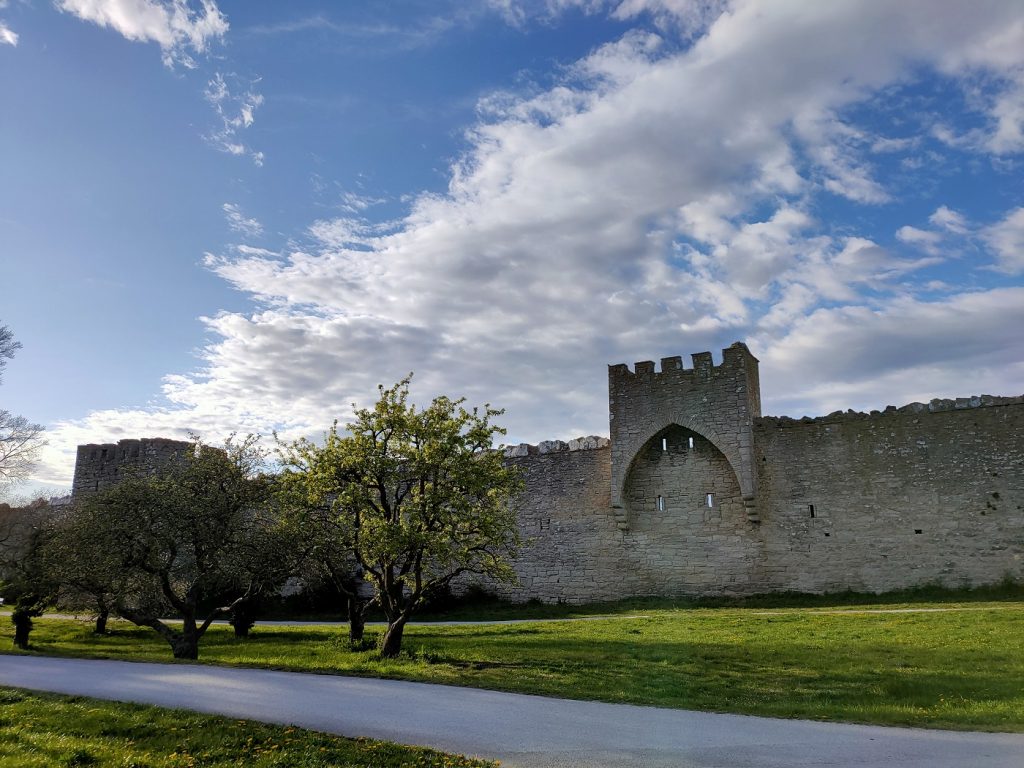
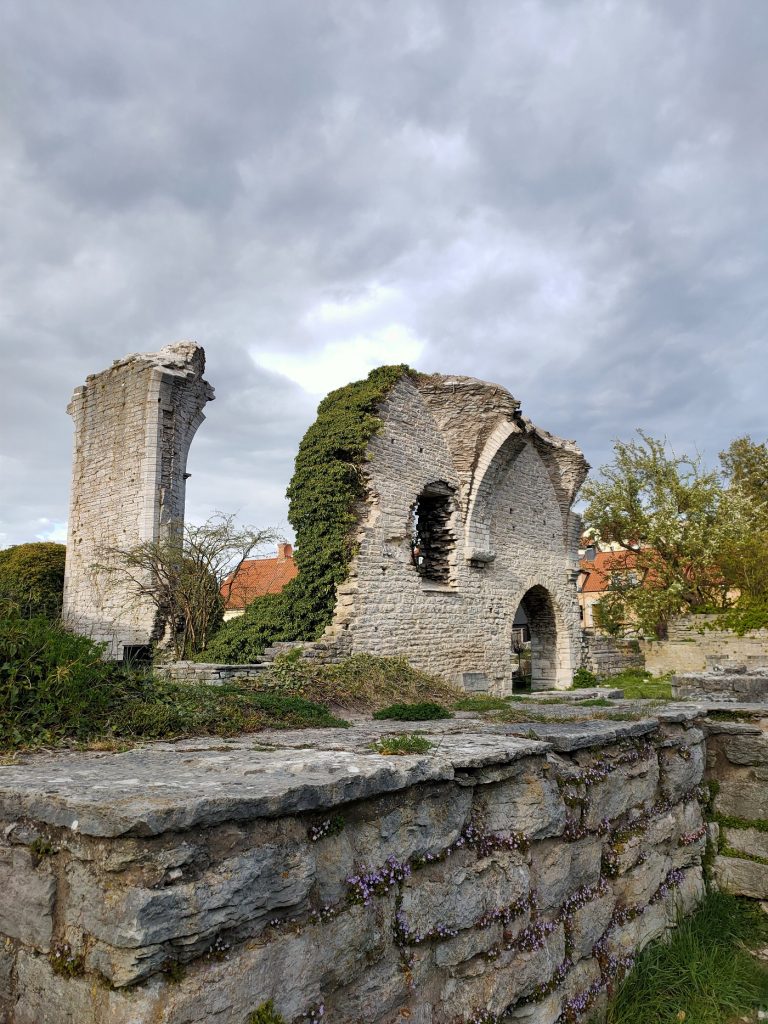
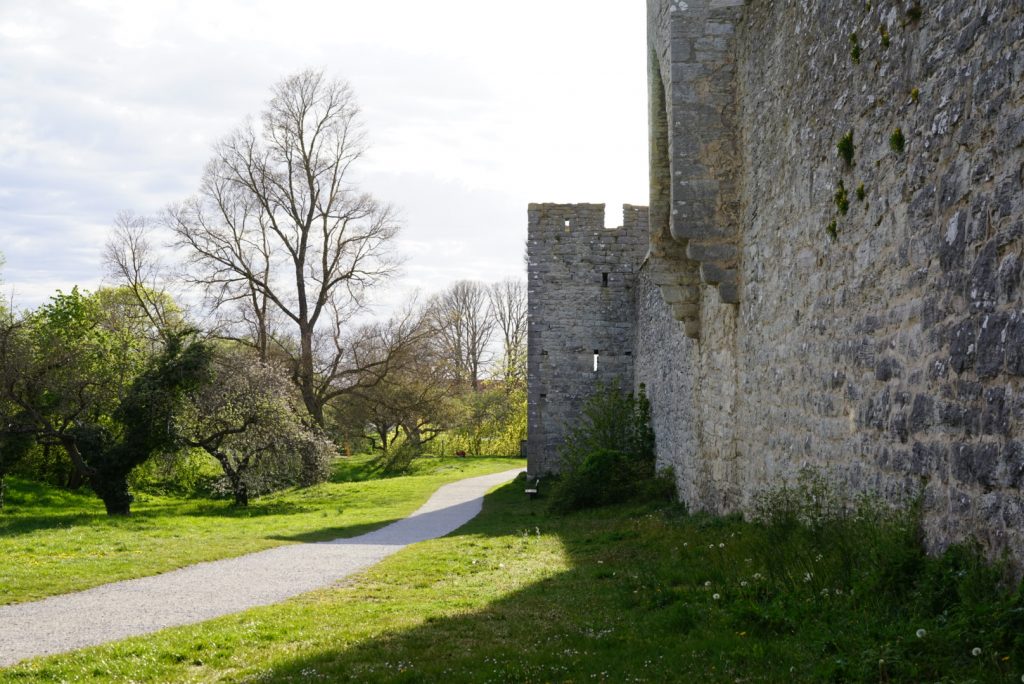
The campus was also modern with historical touches inside and out. Sadly, I forgot to take pictures of the campus to show you all but trust me when I tell you the campus is really cool and has much to offer. The campus is also very close to the seaside. You can even see the shores from the library. But the days are getting longer, so I couldn’t see the sun set from the library while I was there. But Visby has many hiking trails which offer amazing views, especially of the sea. The view from the top of the city on to the shores were to die for! The ocean breeze brushing against your skin with the beautiful silhouette of the sun setting onto the open shore. These sunsets catch you in moments you do not expect them and makes Gotland truly magical.
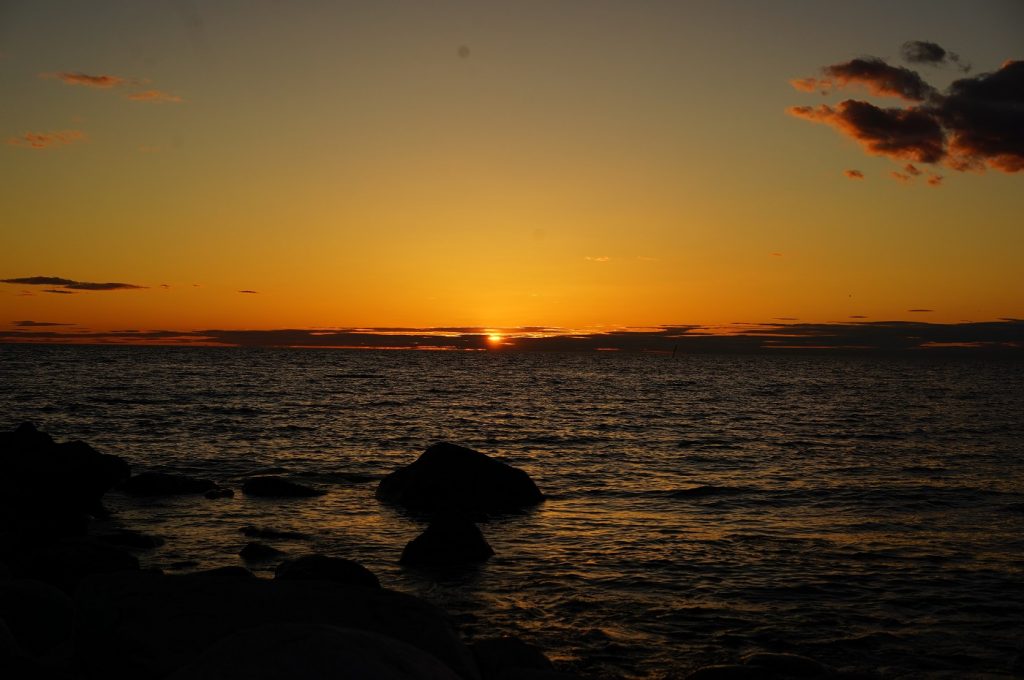
The food at the campus was also great! The cafeteria offers meat, fish and vegan options, and a salad bar with different spices and sauces to add to your plate. The price for the food also includes coffee and tea. So, after a nice lunch at the cafeteria you’d be entirely full and satisfied. The cafeteria also had two floors where you could sit and enjoy your food. So, you’d always have somewhere to eat on the campus. The cafeteria also offers smaller cakes, sandwiches and cookies if you aren’t looking for a big lunch. Even ice cream! The cafeteria in Gotland really is awesome and has something for everyone.
AND did you know? Visby has an ice cream shop that claims to have the most ice cream flavours in Europe. They have about 300 flavours! The ice cream shop is on the way to the campus, so you can get ice cream before class, or walk to the shop after class or during the break on a hot sunny day to get some delicious ice cream. Gotland also have their own Visby beer; I tried one in a pub, and it was tasty and fresh. They also have their own berries, called Salmbär, that they use to make jam, ice cream and much more! And, if you’re ever in the mood for saffron, Gotland is obsessed with saffron. They put in pancakes, sauces and even in ice cream!
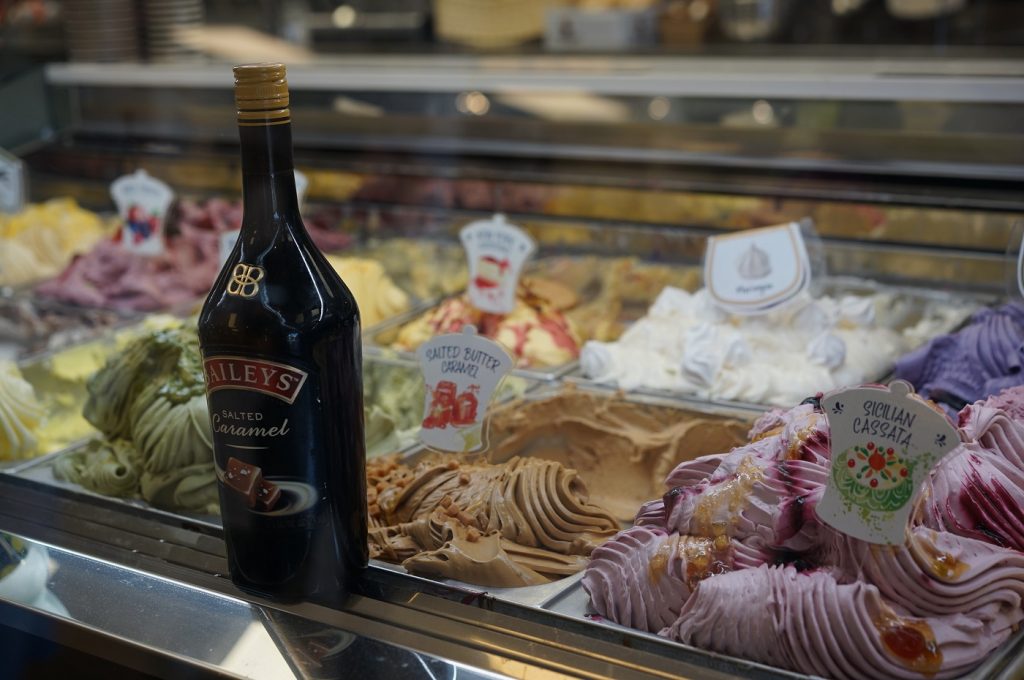

All in all, Gotland is a historical place, with lots to do, lots to see and definitely lots to eat and drink. Visby is vibrant, warm, and beautiful. From gorgeous ruins and sunset views to delicious beer, pancakes, and ice cream the island is worth a visit. And if you’re ever in the mood for more, there are many more cities in Gotland besides Visby. While I haven’t been there yet myself, I have heard they also have much to offer and will definitely be going back to Gotland soon and explore more of this gorgeous island.

/Sam
After a long,dark winter the people of Uppsala will welcome the much awaited spring on the 30th April by celebrating Valborg. What makes this year’s Valborg stand out is that it is being celebrated after being canceled for the past two years! Which means more enthusiasm from the students to finally be able to experience the spring festival.
If this is your first Valborg in Uppsala, here is a summary of the main events happening in Uppsala during Valborg-
Nations
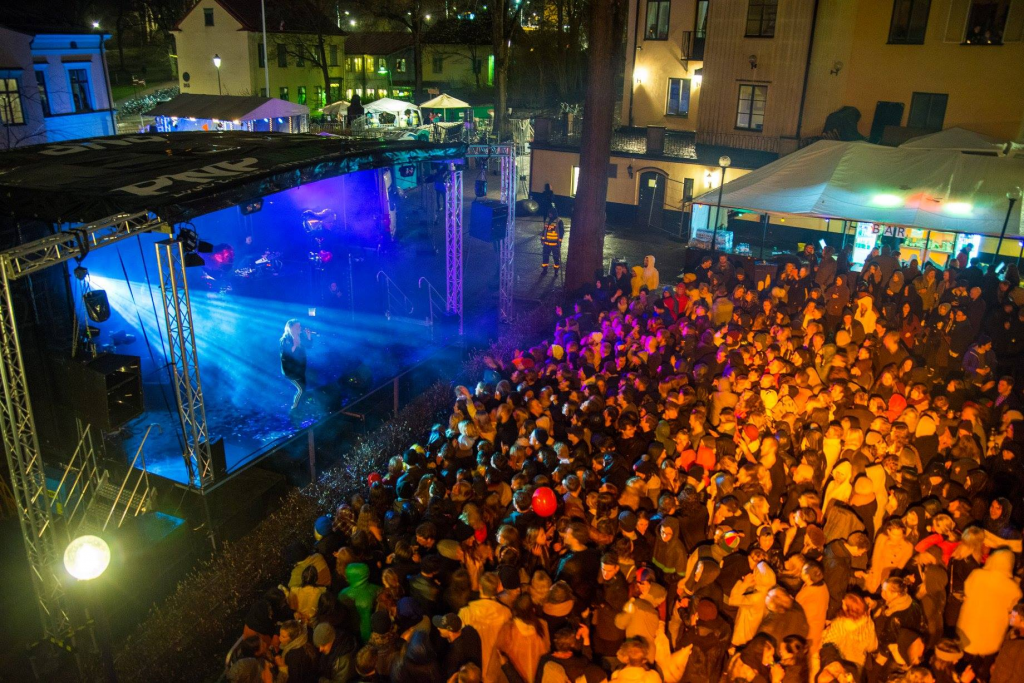
If you witnessed the extremely long queues near the student nations the past weeks in Uppsala, the students were queuing up for tickets for none other than Valborg! The student nations usually host the majority of events for the festival from champagne breakfasts to pubs in the evening.
But even if you could not get the tickets for the nations, you can still enjoy Valborg! Keep reading to know more…
The Raft Race
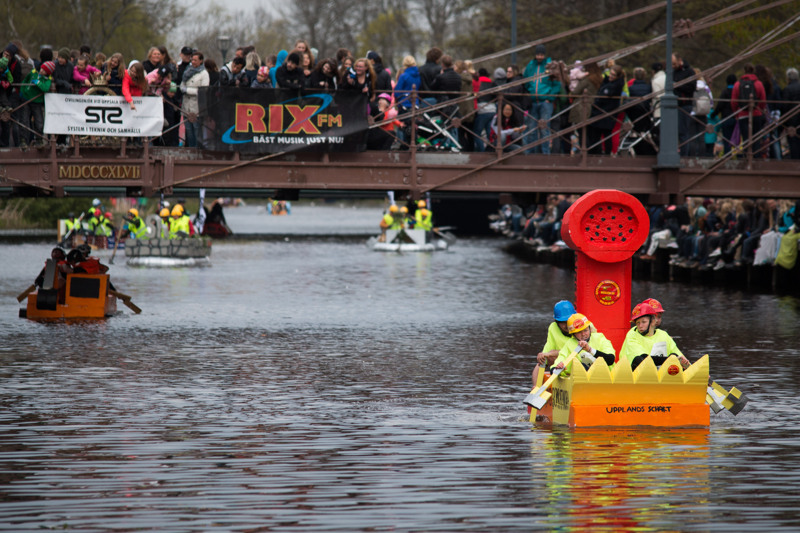
What started as a friendly bet in 1975 has now become a tradition in Uppsala to highlight Valborg.On the morning of the 30/4 the much awaited raft race will be hosted by UTN at the Fyris river and you as an onlooker can enjoy it too.
Champagne breakfast and herring lunch
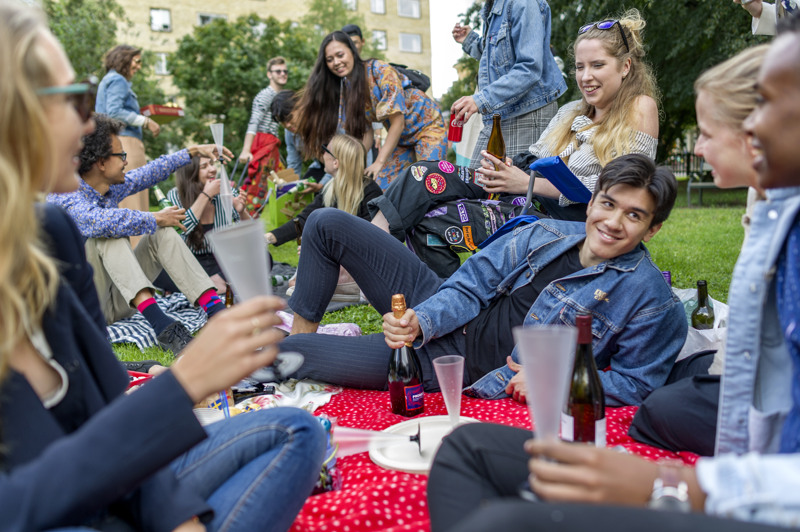
You along with your friends can celebrate Valborg the traditional way by enjoying a nice champagne breakfast and/or a herring lunch outdoors while taking in the warmth of the sun.The crowd usually gathers at Ekonomikum park so be sure to arrive early and reserve a spot. You could also head to the Uppsala Concert House to enjoy a nice herring lunch.
Donning of the caps

Another tradition to welcome spring is when the vice chancellor of Uppsala University waves her hat from the balcony of Carolina Rediviva and the students gathered around wave their student hats back.Sounds like something you would enjoy? Then be there on the 30/4 at the Carolina Hill at 15:00 sharp to celebrate the festival with the enthusiastic crowd!
Spring song
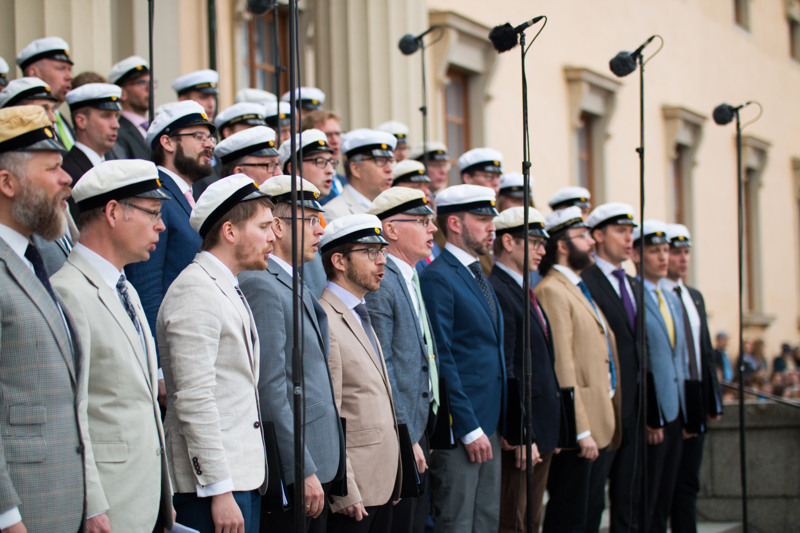
A tradition that dates back to the 19th century is a mesmerizing song performance by the orchestra, Orphei Drängar at the steps of Carolina Rediviva(sometime after the donning of the caps) to welcome the arrival of spring.
Bonfire
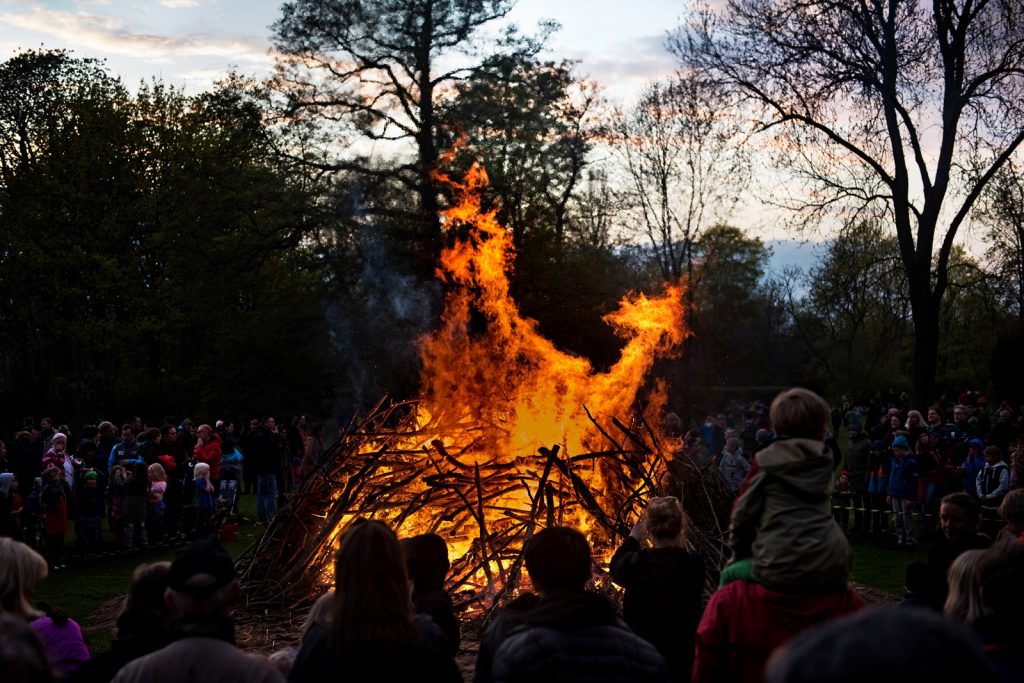
A large bonfire or majbrasa is lit at the Royal mounds of Gamla Uppsala on the night of Valborg (around 9 pm) as a way to ward off predators threatening pasturing animals and welcoming the arrival of spring by gathering around the fire and singing into the night.
It can be overwhelming to keep track of all the events happening during Valborg, so here is a link that contains most of the information you need on the day of Valborg: https://valborgiuppsala.se/en/
Hope you enjoy celebrating Valborg in Uppsala!
/Mansi
Something wonderful about the Swedes is that they don’t burn their bridges. Valborg, a tradition historically associated with warding off evil spirits through the act of lighting massive bonfires and singing with intentions to scare off witches, transformed with the times to keep up with the pace of a less religious country that’s now too occupied to make time for witch hunts. I am, of course, just kidding to lighten the mood through my history lesson, Sweden is a very welcoming country even for witches today. A functional adoption of lighting bonfires through the course of our sheep-island, Gotland’s, history became the use of bonfires as means to protect livestock – Valborg traditionally became the day when farm animals were let out of the barns for the first time, and farmers would gather their sheep around the fire to scare away predators, all the while praying for a fruitful harvest season. Nowadays, Valborg is celebrated for yet another reason.
This time last year, I was a burnt-out Zoomling sitting in my Visby apartment with no hope on the horizon to experience a true Valborg gathering which everyone else has fired my imagination with, but now, I am burning with curiosity to see what this tradition is all about. The modernised function of this tradition is to welcome spring, to manifest the change in seasons, which is much needed after the lengthy winter we have been stuck with here on Gotland. If by dancing around bonfires I can let the intrusive April snow clouds know they have outstayed their welcome, buckle up beause I have energy to burn!
Fiery jokes aside, allow me to spark your curiosity about Valborg celebrations on Gotland. Rather than a closed, family celebration, Valborg is a public event, often organised in neighborhoods by the local community, and there are numerous celebration spots to be all fired up and ready to welcome attendees on the evening of April 30th. HelaGotland’s calendar lists several bonfire gatherings to take place across Gotland, where the general celebration events include music, song-singing, spring-welcoming, Swedish fika and hot dogs, choir performances, as well as well-planned times for the lighting of the bonfires. These true-to-tradition celebrations have a cozy atmosphere as the small communities gather and spend time by the fire from dusk till the cold grips of the evening. The afternoon sun is bound to keep everybody warm, but after sunset, gatherers seek warmth around the orange flames of the scorching fire.
If you don’t feel fired up by the idea of spending time outdoors after sunset, here’s a hot tip: our student union Rindi has other events to offer between April 28th to May 1st to cater to your liking. From Hästarnas dal to Strandgärdet and Almedalen, their gatherings take place both during the day and in the late afternoon to evenings, and you can join them for all sorts of games, sports activities ranging from football to baseball, a quiz walk, a big picnic in Almedalen park, as well as an ovve ceremony! This will be a fantastic opportunity to unite as students and spend some quality days together. Don’t forget to wear your ovve!
I hope I managed to spark your interest in spending Valborg on Gotland and get aquainted with this beloved Swedish tradition. Personally, I will spend the rest of my working week burning the midnight oil to wrap everything up and have the free time to enjoy the planned events. Thank you for reading my article that I filled with as many fire-expressions as I could for your enjoyment – Have a safe and pleasant Valborg celebration!
/Patricia
Its 4 am and world outside this window is as white as snow. Pun Intended. I sit down with my tea and with every sip I recall a story that I would like to share with you all. A couple of years ago I was part of a leadership exchange from Pakistan to USA. I was so excited to learn from it, meet so many young people from around the world and participate in activities. But above all I was excited to use accessible bathrooms, ramps and lifts to my heart´s content. I reached USA and quickly made friends with all the participants. Then one day the organizers arranged a trip to another event and a bus was booked for us. I was super excited to see a bus that had a lift in place and I could easily get in a special designated seat which was at the back of the bus. Once the bus started, everyone was settled and I realised there were a couple of seats between me and the other participants who mostly occupied the front rows. Just in a few moments into the journey, the music started and then there was dance followed by singing. Though I was in the bus and with them but yet not ´with them´. I saw from a distance all the fun and waited for them to move back a little so I can also participate. When that seemed impossible, I could not make my voice reach them and none of them looked back, I sat there just fidgeting with my phone and looking outside the window, a tear escaped my eye.
Once we reached our destination, we got off. Everything was normal. But my mind kept trying to reflect over the situation. I asked for an accessible bus and my wish was granted then why did I feel not included? That’s when I realised the infrastructure did not fail me, the community did.
Fast forward today, I am in Uppsala pursuing a Master’s degree in Entrepreneurship aiming to find sustainable solutions for people with disabilities. I am also aiming for a student life experience that I could not have back in Pakistan because the infrastructure did not support it. But I wanted that to change forever. As I enjoy some parts of accessibility, I wrote to all the student Nations to ask about their understanding of accessibility and inclusion. Seven out of thirteen Nations replied me explaining why their buildings are not fully accessible. I wrote back cheerfully proposing a workshop or a meeting under the theme of ´Inclusive Lens´ to build a community that would support people with disabilities regardless of the infrastructure. Sadly none of the curators got back to me after the proposal and now I sit here sipping my Pakistani milk tea wondering how insignificant infrastructure is as compared to the power of people is. If only we as people could build our foundations on empathy through our actions and not let policies, systems and conventions take control.
As my tea reaches the bottom of my mug so does my article with a challenge or a proposal for you all to build an inclusive lens through your leadership and actions and also call me if you want to have fantastic tea and hear stories of inclusion.

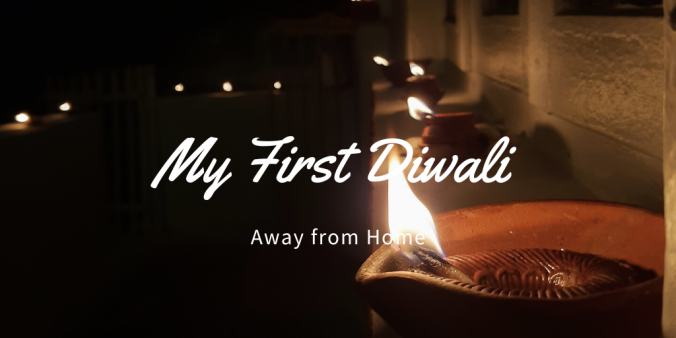
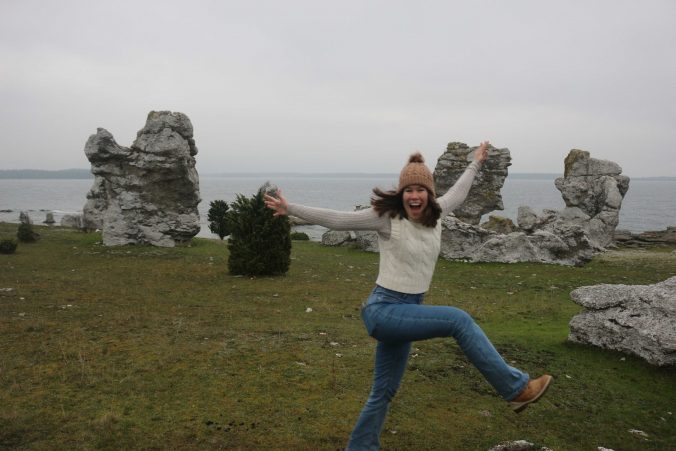
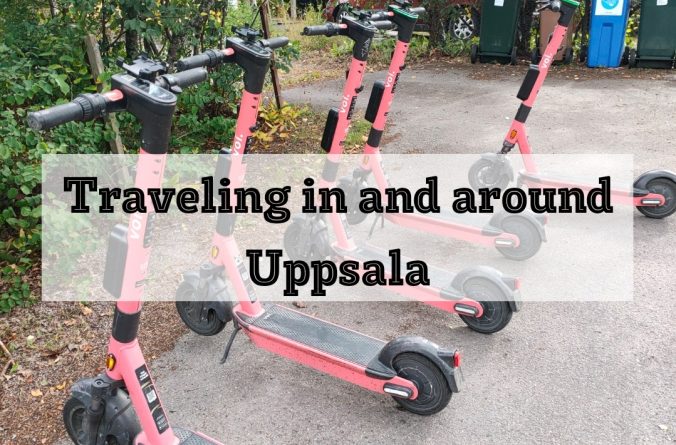
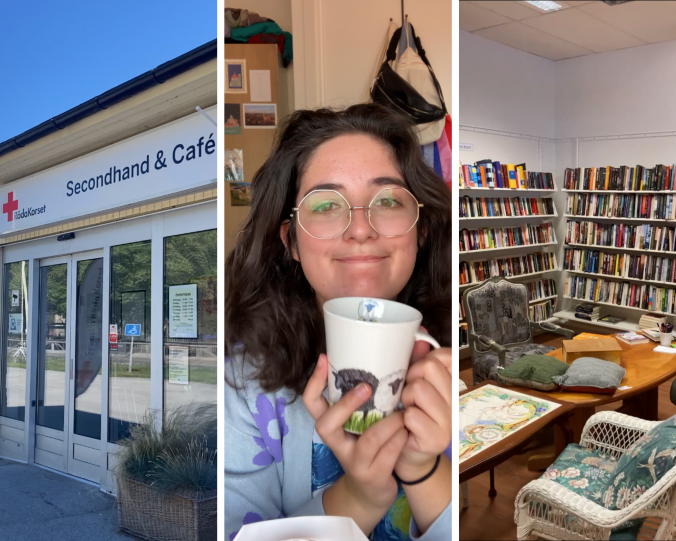
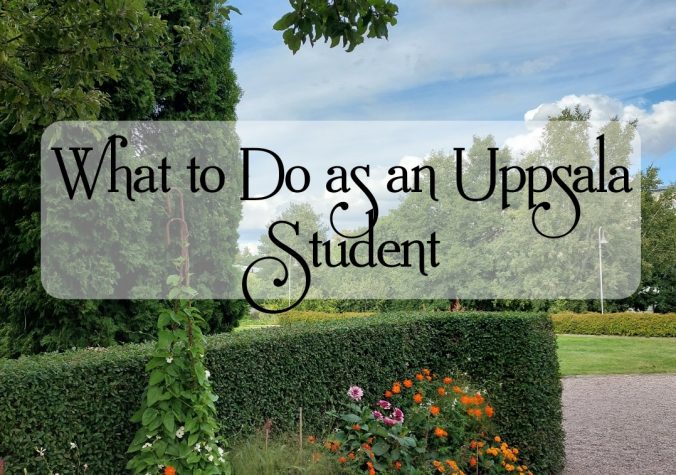
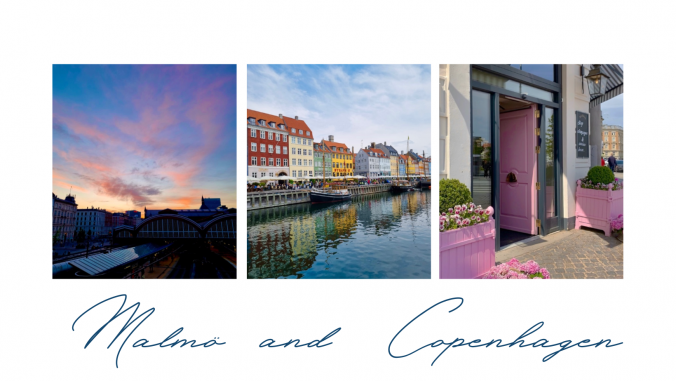

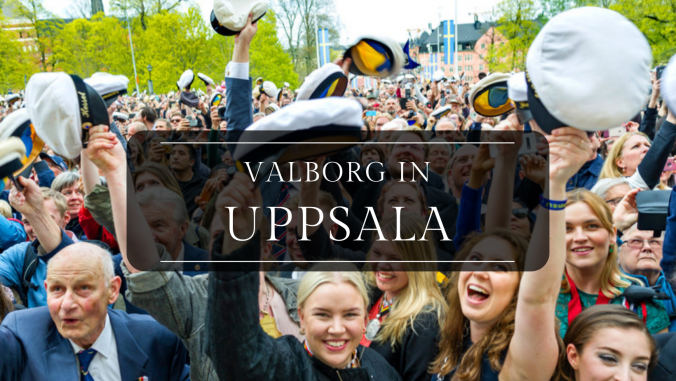
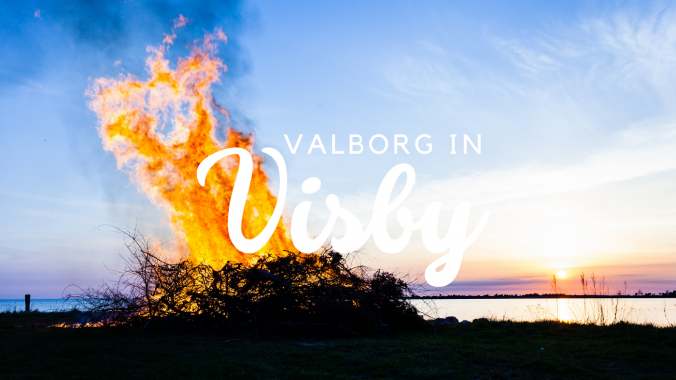
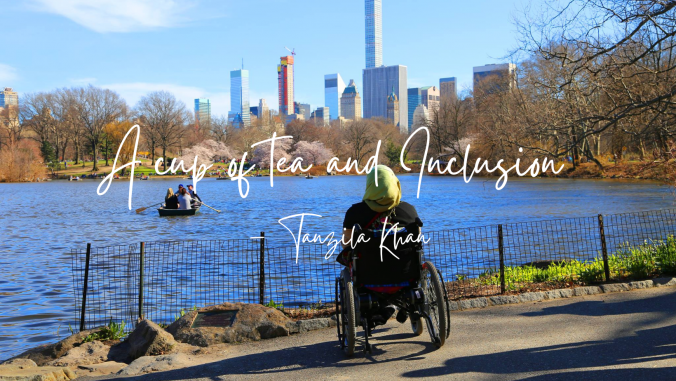
Recent Comments